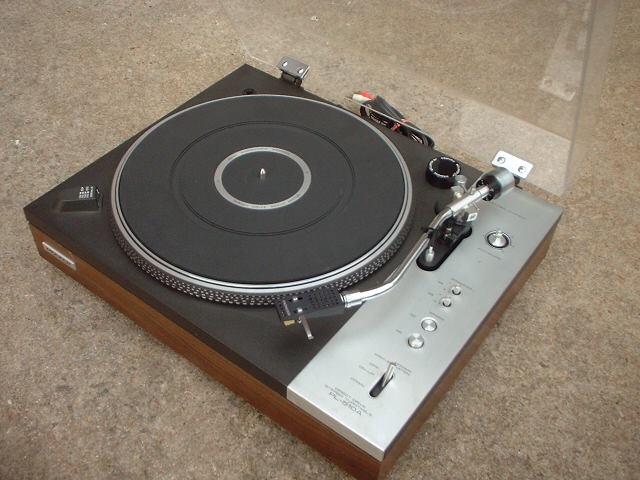
Pioneer has conquered the one big problem of high-priced turntables.
The High price.* For under $200; you can now own the direct-drive PL-510. [*For informational purposes only. The actual resale prices will be set by the individual Pioneer dealer at his option. ]
The best way to judge the new Pioneer PL-510 turntable is to pretend it costs about $100 more. Then see for yourself if it's worth that kind of money.
First, note the precision-machined look and feel of the PL-510.

The massive, die-cast, aluminum-alloy platter gives an immediate impression of quality.
The strobe marks on the rim tell you that you don't have to worry about perfect accuracy of speed.
The tonearm is made like a scientific instrument and seems to have practically no mass when you lift it off the arm rest. The controls are a sensuous delight to touch and are functionally grouped for one-handed operation.
But the most expensive feature of the PL-510 is hidden under the platter. Direct drive. With a brushless DC servo-controlled motor. The same as in the costliest turntables.
That's why the rumble level is down to -60 dB by the JIS standard.
(This is considerably more stringent than the more commonly used DIN "B" standard, which would yield an even more impressive figure.) And that's why the wow and flutter remain below 0.03%.You can't get performance like that with idler drive or even belt drive. The PL-510 is truly the inaudible component a turntable should be.
Vibrations due to external causes, such as heavy footsteps, are completely damped out by the PL-510's double-floating suspension. The base floats on rubber insulators inside the four feet. And the turntable chassis floats on springs suspended from the top panel of the base. Stylus hopping and tone arm skittering become virtually impossible.
(Even the turntable mat is made of a special vibration-absorbing material.) But if all this won't persuade you to buy a high-priced turntable, even without the high price, Pioneer has three other new models for even less.
The PL-117D for under $175? The PL-115D for under $125? And the amazing PL-112D for under $100? None of these has a rumble level above -50 dB (JIS). None of them has more wow and flutter than 0.07%. So it seems that Pioneer has also conquered the one big problem of low-priced turntables.
The low performance.
=========
Turntable:
- Direct drive
- Brushless DC servo-controlled motor 33 1/3 and 45 RPM speeds
- Strobe light
- Strobe-calibrated platter rim ±2% fine adjustment of speeds
- Double-floating system of suspension
- Turntable mat of high-internal-loss rubber
- One-handed operation of controls
Tonearm:
- Lightweight S-shaped tubular design
- Static balance
- Ball-bearing pivot with angular contact
- Anti-skating device
- Lateral balancer
- Direct-readout counterweight
- Viscous-damped cueing
- Lightweight plug-in headshell
=========
U.S. Pioneer Electronics Corp., 75 Oxford Drive, Moonachie, New Jersey 07074.
PIONEER--Anyone can hear the difference.
(adapted from Audio magazine, May 1977)
= = = =
Also see:
Pioneer PL-630 direct-drive turntable (ad, Dec. 1979)
Pioneer SL-518 direct-drive turntable technology (ad, Jan. 1979)
Pioneer Model 510A Direct-Drive Manual Turntable (Equip. Profile, Aug. 1977)